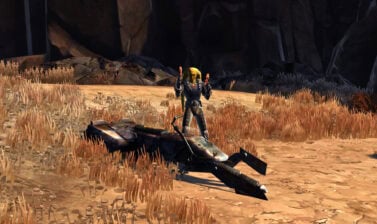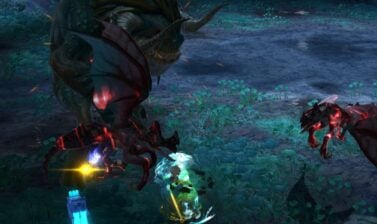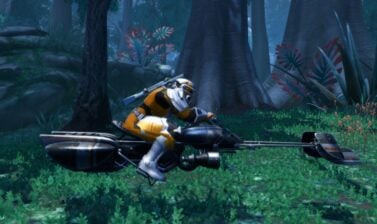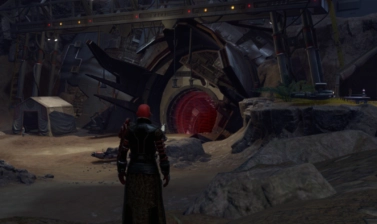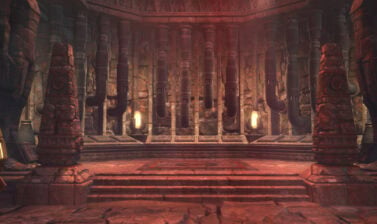This article discusses the relationship between mechanics and strategy in boss fights, particularly in group content. Examples come from SWTOR, but much of it is applicable to other games.
Many players don’t recognize the difference between the strategy used to beat a boss and the actual mechanical requirements. Being unaware of this distinction can result in conflicts, while additional awareness can propel you forward.
Defining Mechanics and Strategy
A mechanic is a description of an event within a fight that you can react to. If you don’t satisfy a mechanic, you are punished by the boss. You may take (more) damage, die, cause the fight to be more challenging, or immediately cause the raid to wipe. Some bosses and mechanics are more forgiving of mistakes. Most mechanics are boss attacks or room effects and tell you what needs to happen.
A strategy is a way to satisfy those mechanical requirements and subsequently beat the boss. It tells you what you should do. A sufficiently detailed strategy is effectively an instruction manual. If you follow such a detailed strategy to the letter, you can get through the fight without understanding a thing.
Examples from Nefra
A strategy tells you how to beat a boss. A mechanic tells you what happens and implies why you should care. Mechanics are the foundation that can constrain a series of approaches into one or more strategies. Let’s take a look at a couple of mechanics from Nefra NiM in SWTOR to illustrate the difference:
Example 1: Nightmare Twin Attack
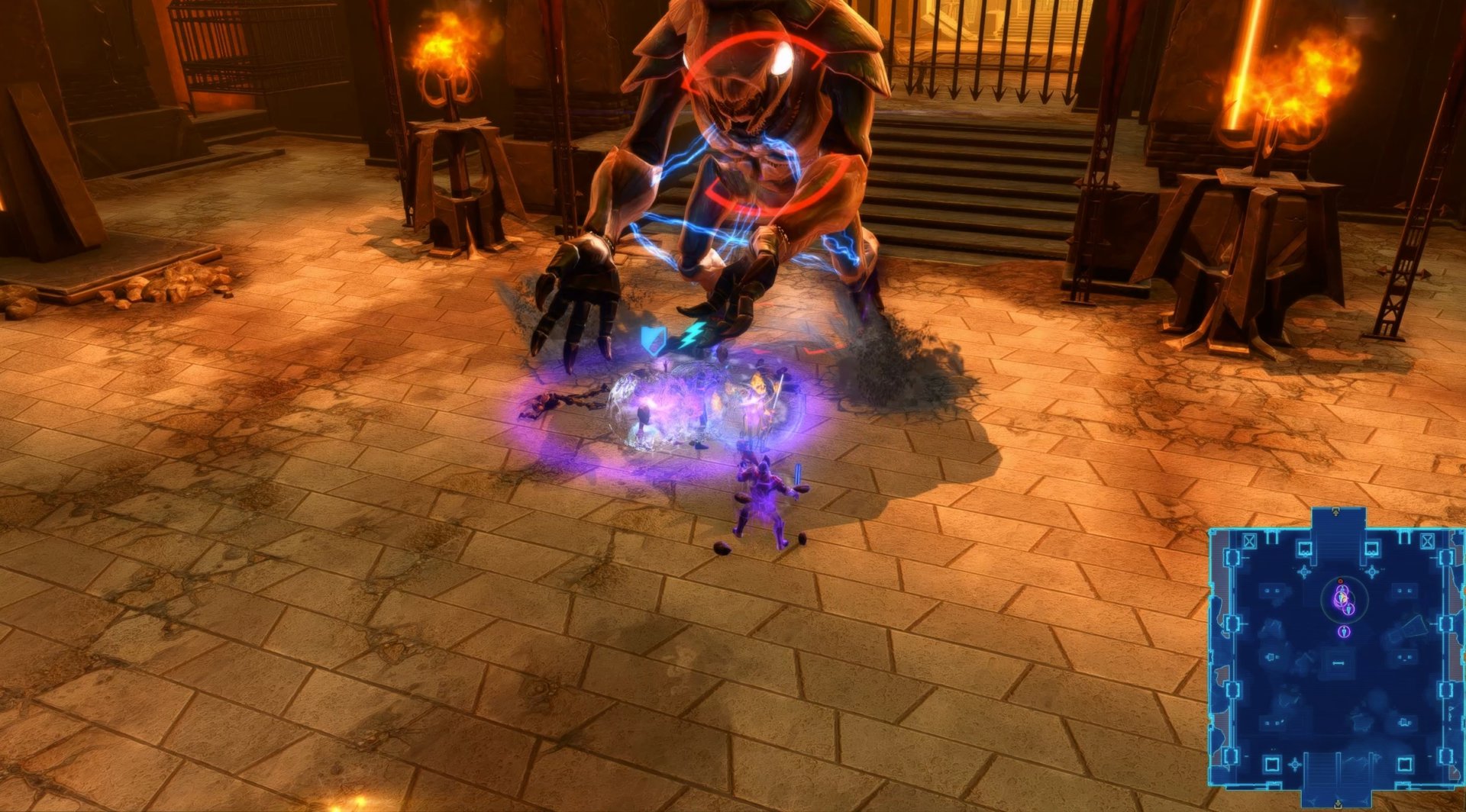
Mechanic
Nefra’s regular Twin Attack is a frontal cleave that deals significant damage, but that damage can be divided between 2 players. The same damage applies to any additional player standing in front of the boss. Each time Nefra does her regular Twin Attack, she gains a stack of a buff.
After she reaches 15 stacks of this buff, Nefra casts Nightmare Twin Attack, which is a more devastating version of Twin Attack that can be divvied up between 8 players. The group can survive the attack if the damage is shared between at least 6 players.
Satisfying Nightmare Twin Attack requires you to stack at least 6 players together facing the boss when the cast finishes, but the mechanic doesn’t tell you anything about where the players or boss should be positioned in the room at a given time.
Strategies
There are 2 main strategies to survive Nightmare Twin Attack:
- All non-tank players stack directly behind Nefra. As soon as she reaches 15 stacks of her buff, the tanks rotate the boss around so that she is facing the group so that the tanks are in the middle of the group. As soon as the damage goes out, the tanks rotate back to prevent the group from being cleaved.
- All non-tank players stand behind Nefra. As soon as she reaches 15 stacks of her buff, all of the non-tank players rush in front of the boss, standing near the tanks. As soon as the damage from Nightmare Twin Attack goes out, the non-tanks run away so that they won’t take damage from future Twin Attacks.
The first strategy puts the bulk of the responsibility on the tanks. It requires to move quickly in lockstep so that the boss turns without repositioning, and demands that they return to their original position in the same way.
The second strategy requires more individual accountability from the entire group. If 1-2 players fail to execute said strategy, the group will likely wipe. However, movement requirements are far less precise because individuals can reach the agreed-upon location more quickly and easily.
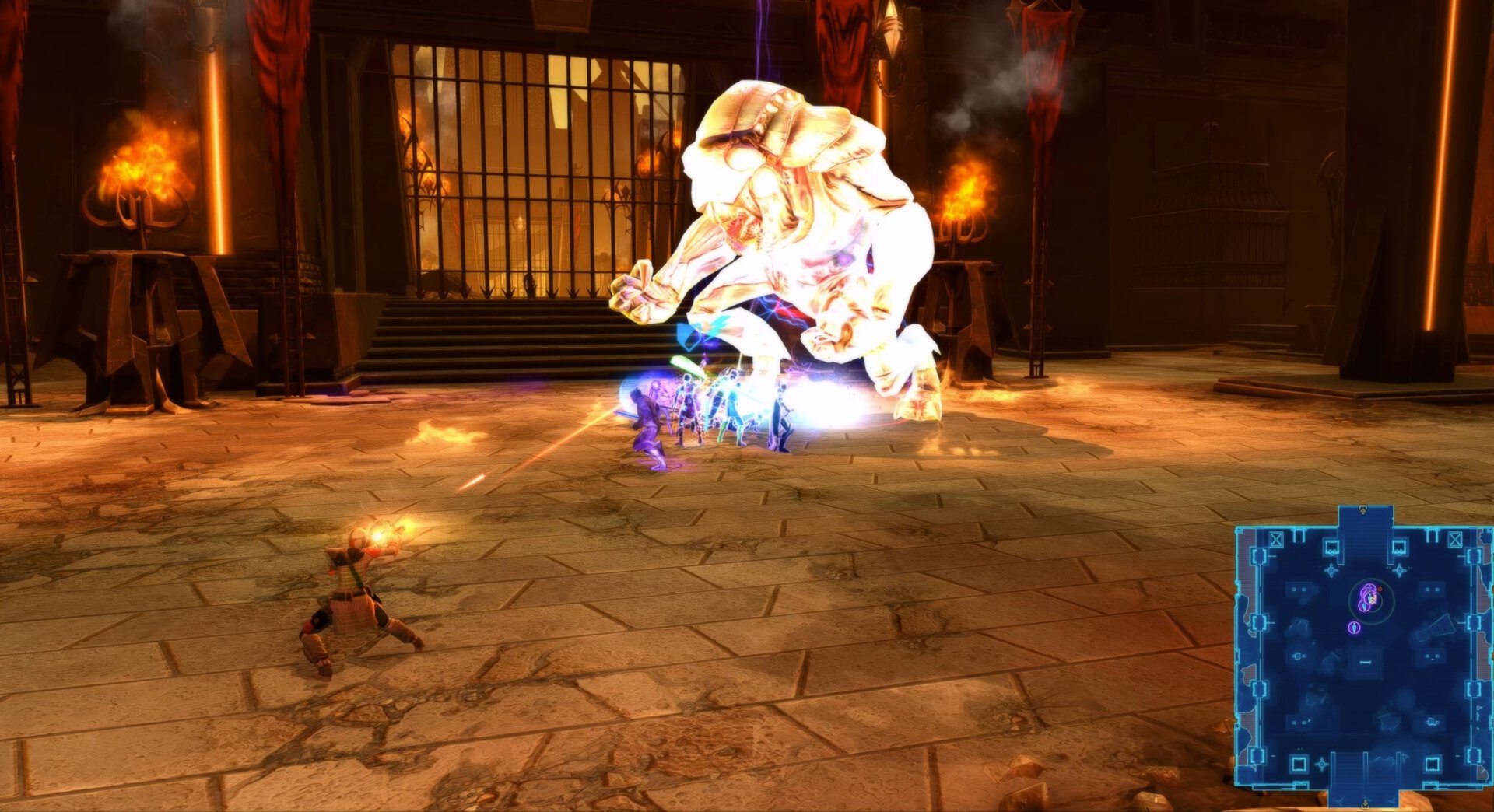
Neither strategy tells you anything about what happens if you don’t have enough people stacked up. You could specify by explaining the mechanic alongside the strategy, but they remain separate concepts.
You can still satisfy the mechanical requirement as an rDPS by standing away from the group and running in front of the boss for Nightmare Twin Attack, and then running away. Stacking when Nefra doesn’t have 15 stacks is not required to beat the boss, though you will make things harder for your healers and potentially upset them.
Example 2: Kamikaze Droids
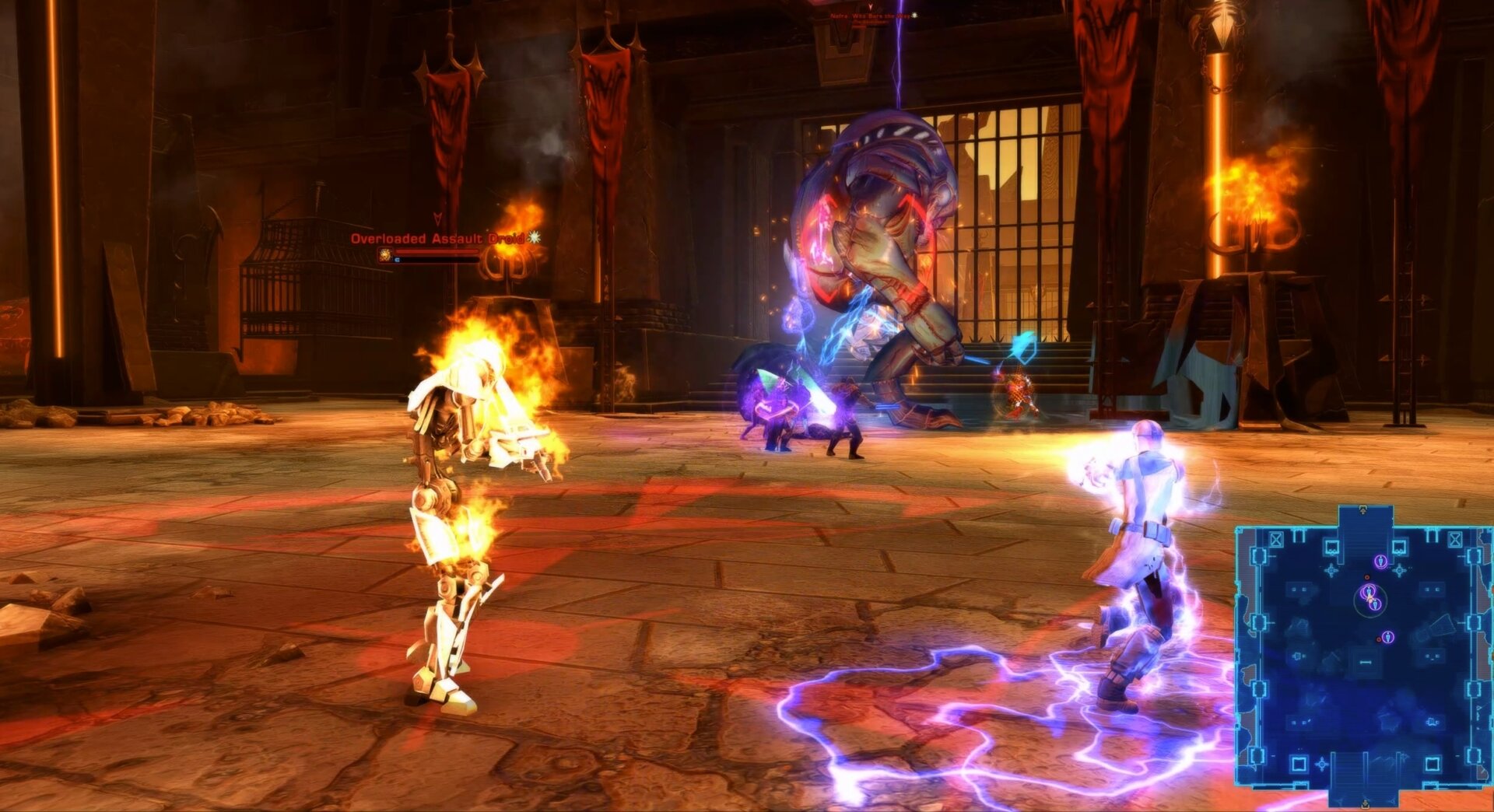
Mechanic
Kamikaze droids will periodically spawn as you fight Nefra. Some of them only target tanks, but others target the player with the highest threat. Once the droid reaches its target, it begins casting its self-destruct sequence. Once the cast finishes, the droid explodes, and anyone still nearby (demarcated by being inside the red circle) is instantly killed.
The mechanic does not explain how to deal with these droids, only that you must get away from them, not where to go to get away. The strategy will inform such things.
Strategies
There are 2 main strategies to survive the kamikaze droids:
- Let the droids jump to whoever they want and expect everyone else to get out of the red circles.
- All but 1 non-tank stacks behind the boss. Assign 1 healer or rDPS to stand far out of the group and get aggro of each droid before it leaps by attacking it as soon as it spawns. Aggroed droids will leap to the assigned player, so they will need to get out of every circle.
The first strategy is stacking-agnostic and relies on more individual accountability from the whole group, as everybody will need to move out of the way every time and come back together for Nightmare Twin Attack (and optimal AoE healing).
The second strategy places more responsibility on the assigned player and healers. That player has to target swap, dodge every droid, and ideally stack up for Nightmare Twin Attack. Stacking becomes mandatory if someone is dead. This player must also receive additional dedicated healing because they won’t be in range of AoE healing.
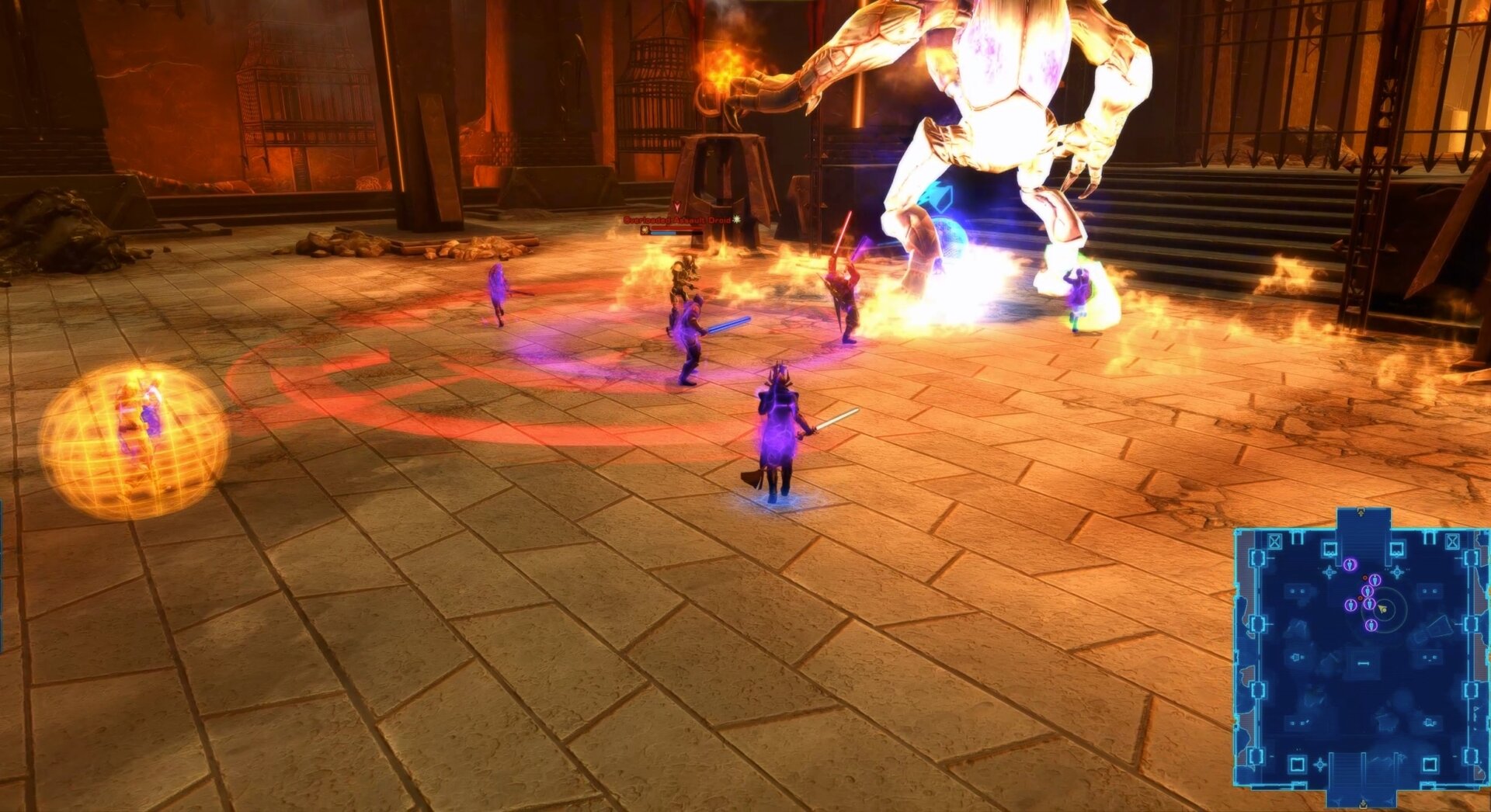
The strategies do not explain what happens if you stand in the red circle, or why it might be advantageous to assign a single, ranged player to manage them. Without understanding the mechanic, you don’t know how essential it is to get out of those circles.
Knowing that the Nightmare Twin Attack mechanic requires stacking will affect your strategy to survive the kamikaze droids. You will have a harder time dealing with Nightmare Twin Attack unless you stack as much as possible.
Unblurring the Line
The line between mechanics and strategy can get blurred sometimes. It’s easy to forget that the two are different if the fight is always done the same way in pugs and prog groups, even if there are viable alternative strategies.
Sometimes, these strategies become so ingrained that players forget about the underlying mechanics and focus entirely on adhering to the strategy. They measure success based on adherence rather than mechanical satisfaction.
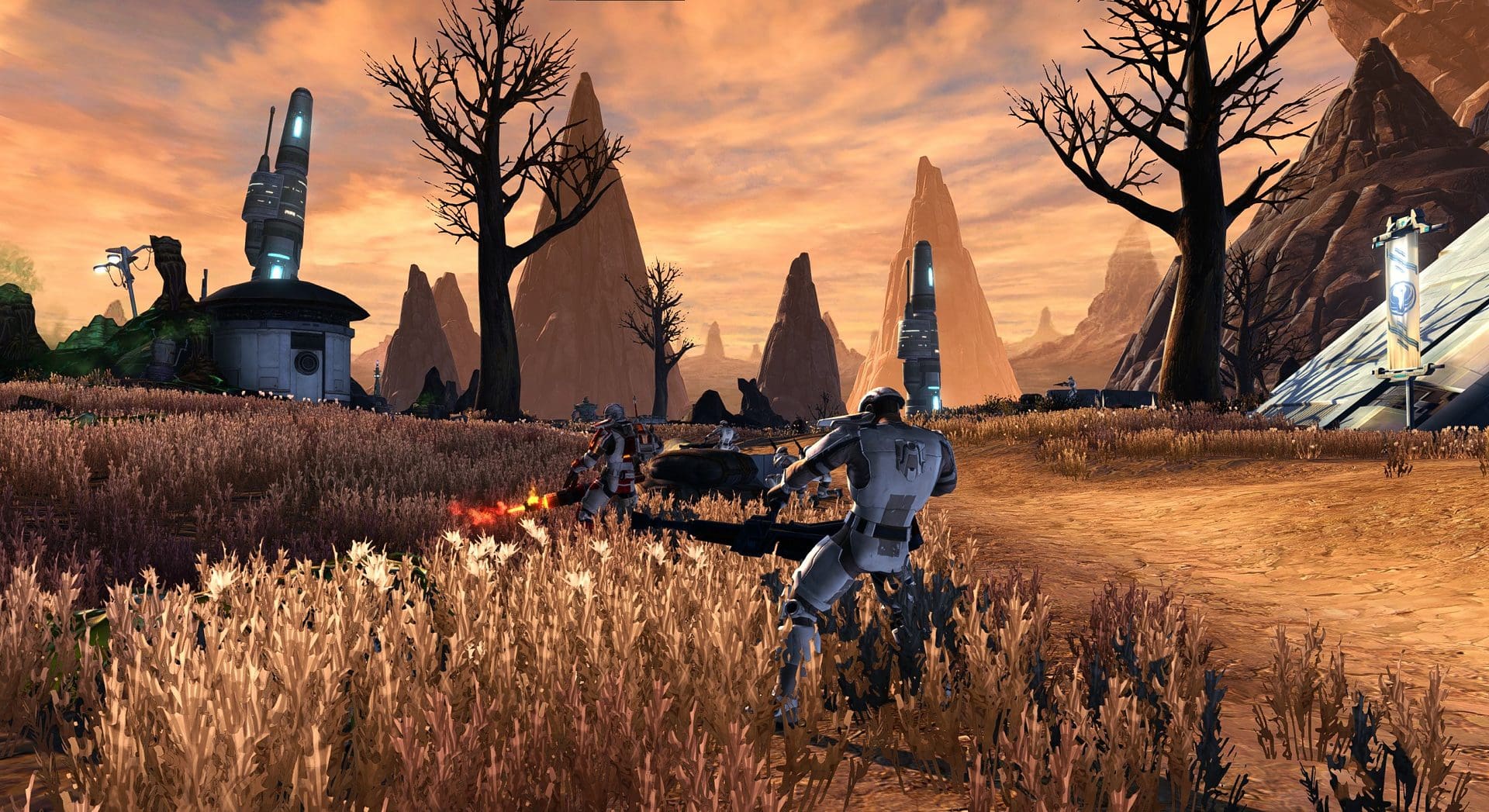
Those who are new to raiding often see these bosses as being monolithic and may interpret the conventional strategy as gospel. They know what works and are either unaware that viable alternatives exist or are afraid to try because they are unaware of the implications because they have no knowledge of the underlying mechanics.
Of course, sometimes there is no viable alternative, and that’s the point where mechanics and strategy meet. Returning to the Nightmare Twin Attack example, stacking is often part of successful strategies for numerous bosses, but it is a mechanical requirement that players stack up.
Some fights can really only be done a single way, and in easier difficulties, there might be so few specific requirements that you just need to attack and survive against vulnerable enemies, and you’ll win. It’s hard to call such things strategies, but they are on that side of the line in the sand.
Mechanics, Strategy, and You
We’ve been thinking of mechanics and strategy as opposing forces, but the reality is that they work together. You will have the greatest chance of success if everybody fully understands the mechanics their role interacts with and uses an agreed-upon strategy to satisfy the requirements of those mechanics.
It’s also essential that each player knows how to play their combat style and discipline so that they can apply their tools to the fight. The more comfortable you are with your spec, the more you will be able to focus on learning the fight and reduce the risk of making a mistake or otherwise performing inadequately.
Some specs perform better in certain fights, either because they have especially useful tools that can be incorporated into your group’s strategy or are less susceptible to the unique dangers presented by the boss in question, and knowing how to play such a spec could make things easier on your and/or your group.

Mastering your combat style and discipline, and understanding the mechanics and strategy for the whole fight, not just for your role and assignment, makes it more likely that you can cover or compensate for somebody else. If you know what needs to happen and how to accomplish it using the tools available to your spec, you can smooth out progression and salvage pulls to clear content faster.
That being said, it’s important to make sure you’re on the same page with your raid lead and team regarding expectations. I see strategy as a means to an end and expect more from individuals in terms of adaptability and expertise. Many others prefer to follow what’s tried and true while relying more heavily on the current meta.
Either way, you’ll have the best chance of success by working together. You should have an easier time doing that now that you have a better understanding of the relationship between mechanics and strategy. I recommend checking out our wide selection of SWTOR Class Guides.

